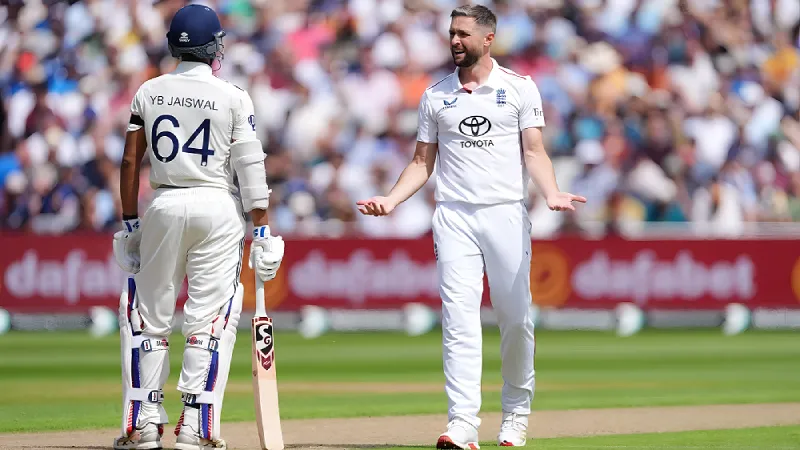Ah, Test cricket — a place where patience, skill, and sometimes a little bit of luck manifest for five days. The recently concluded 2nd Test match between England and India had all the classic drama you hope for, with tension, twists, and all the umpiring decisions that have everyone else talking as well. In a post-match interview, England’s Chris Woakes expressed some honest opinions on how a couple of decisions may not have gone England’s way, and how certain moments could well have shaped the result considerably.
The Early Pitch and Those Crucial Decisions
Woakes shared his thoughts on the pitch conditions and highlighted crucial early moments that set the tone for the match. To him, the pitch still had a little grass on it, which typically means that the ball is going to move around a little more, especially early on. That is one of the elements that bowlers and captains factor in when they aim to implement their plan. He went on to express that early on, the ball did move around enough to warrant attacking the Indian batsmen, and England had them nearly at 30 for 3, then the tide changed.
What stuck with Woakes and, let’s face it, any cricket supporter watching the match, were the umpiring decisions that went England’s way. He pointed out how a couple of big calls could have very easily changed the context in the game. This is something cricketers deal with every day. They call it an umpire’s call, and it can be the ultimate heartbreak or a daymaker. And in test cricket, when every session count toward the overall result, interruptions are not only visually a distraction for the scoreboard but also disrupt the mindset.
DRS: A Blessing and a Bit of a Puzzle
The DRS (Decision Review System) has been called a game-changer, but Woakes reminds us that it is not without errors. He stated that generally, DRS has improved the game by getting a greater number of decisions correct, to which many players and some fans would agree. But interestingly, he even suggested that if a batsman leaves the ball and it goes on to hit the stumps, that should be considered out. This is controversial and provides a new perspective to an ongoing debate about DRS.
This concept may seem strict, but it relates to how players feel about precision and accountability. Occasionally, batsmen leave balls that are far too close for comfort, relying on fate. Woakes’ point rallies for a stricter interpretation, which could, in theory, eliminate those terrible “not out” moments, making the field swarm with “what just happened?” conversations.
Home Ground Feelings and Emotional Rollercoasters
One of the most touching moments in Woakes’ reflection was his deep appreciation for playing Test cricket at iconic grounds like Warwickshire’s HMIS. He spoke fondly about his bond with the ground and how many limited opportunities he’s had there in his career, which magnifies how much everything means to him.
Playing at home with friends and family watching and everything on the line, you feel you’re in the moment. Woakes’ honest response to the emotional impact of those decisions reminds us that players feel those moments at some level, beyond simply accounting for the numbers – sometimes the impact of one decision against you hits as hard as the scoreboard.
So, what does this all mean for us? Are we to simply go on pushing for more regulation of everything (including leaving the ball)? Doesn’t that grey area and unpredictability intrigue us as part of Test cricket? Is it perfection we want, or do we feel relaxed that it isn’t?
To catch up on the most current news on all of your favorite thrilling cricket updates, visit Six6slive to access our comprehensive Latest News, insightful analysis, and updates. Connect with the action now to make sure you never miss out!
